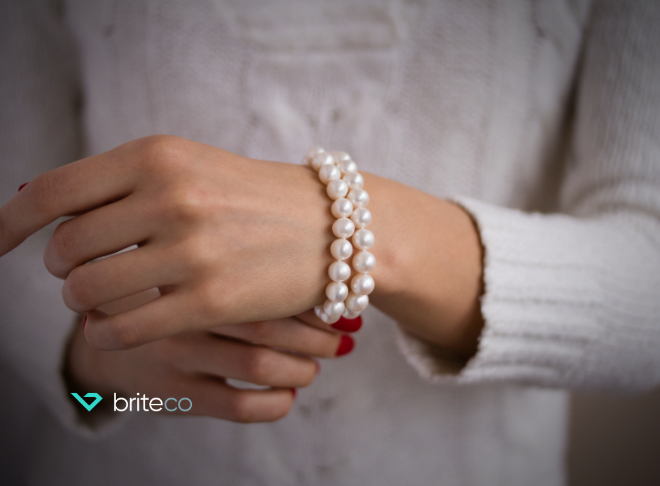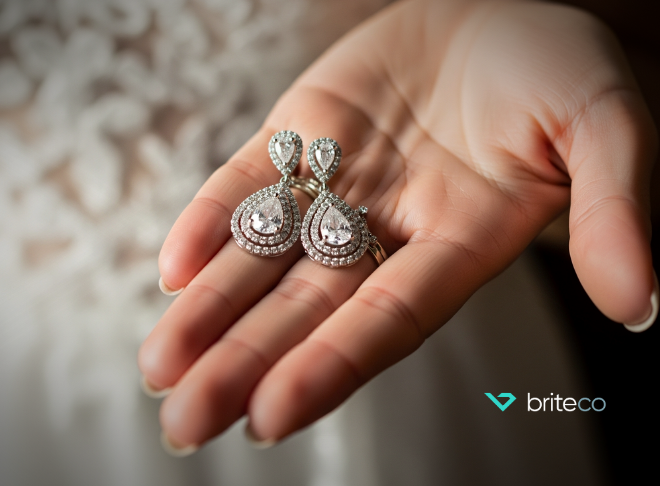Customers are becoming increasingly aware of the impact their consumer habits have on the environment. Unfortunately, the fine jewelry industry has one of the highest carbon footprints of any sector.
Mining ore and gemstones like diamonds for luxury jewelry has a devastating impact on the local ecosystem around the mines due to chemical leakage, loss of biodiversity, and land erosion. It also affects the planet due to greenhouse gas emissions and water and energy consumption.
However, more jewelry makers and retailers are choosing to carry sustainably sourced jewelry and manufactured fine jewelry pieces to help offset the environmental impact of jewelry production done by the industry. Learn what to look for when choosing sustainable gems and jewelry options to help you build a high-end ethical jewelry collection.
What You Will Learn
What Makes Jewelry Sustainable?
Sustainable fine jewelry refers to transparent sourcing practices across the jewelry supply chain and the use of predominantly sustainable jewelry materials during the manufacturing process. Several factors contribute to sustainable jewelry making, including:
Supply chain transparency
The metal, gems, and minerals used to create luxury jewelry often come from some of the poorest and most politically tumultuous regions. Unlike sustainable materials with transparent sourcing, these materials can pass through several hands from the mine to the manufacturing plant, making traceability a challenge.
Several companies, including DeBeers and IBM, have introduced blockchain technology to help verify jewelry sources. This is especially valuable for identifying diamonds sourced from conflict regions.
Another transparency concept adopted by some in the industry is Fairmining. Leading supplier of gems and precious metals, Hoover and Strong, have introduced Fairmined gold and silver.
Fairmined metals are certified products sourced from artisanal and small-scale mining operations that offer complete visibility around their mining processes, support the local economy, and facilitate social development.
Manufacturing from recycled materials
Jewelry made from recycled metals, such as solid gold, sterling silver, and recut or repurposed gems, is almost guaranteed to have a lower environmental impact than brand-new jewelry because it does not use extractive mining processes. A 2020 study found that recycled gold was about 300 times more eco friendly than primary metal processing, in regards to energy consumption and global warming impact.
Look for eco friendly jewelry brands that source their recycled metals within the supply chain or derive their metals from recycled tech devices like circuit boards and computer parts.
Low-impact processing
One aspect of the jewelry industry that is often overlooked is gem-cutting. Before gems can be incorporated into the final jewelry design, the rough stones need to be cut and polished to give them the facets coveted by jewelry collectors.
Gems are initially cut by hand to determine the final shape of the stone, then refined using grinding machines that produce microscopic dust particles. Many gem-cutting plants in low socioeconomic areas have poor ventilation. This allows the dust particles to become embedded in workers’ lungs, contributing to severe respiratory illness.
Cutting and grinding gems uses toxic chemicals and high water volumes, leading to chemical runoff and polluting local water supplies.
To ensure shopping from sustainable jewelry manufacturers, look for labels certifying Fairmined gems to ensure you’re buying from a designer that supports local gem cutters and jewelry manufacturers that follow sustainable gem making practices, ensuring everything from labor to sourcing is done in a socially responsible manner.
Lab-grown gems
Mined gemstones and precious metals are finite resources, and mining practices severely damage the environment. You can minimize your jewelry’s impact on the ecosystem by choosing pieces with lab-grown gems.
Sustainable diamond jewelry has Lab-grown diamonds which are created synthetically using techniques like Chemical Vapor Deposition (CVD) or High Pressure High Temperature (HPHT) to make the molecular structure of these stones. You can also use these processes to make other colored gemstones.
There is no visible difference between lab-grown gems and earth-mined gems; however, earth-mined gemstones contain a trace amount of nitrogen which is only detectable via Diffuse Reflectance Infrared Fourier Transform Spectroscopy (DRIFTS).
Lab-grown gems typically cost 40-50% less than organic gems, allowing you to buy a gem with a higher carat value. However, organic gemstones, especially diamonds, hold their value better on the jewelry market.
How to Protect Your Sustainable Jewelry
Sustainability also relies on consumers being willing to invest in quality rather than quantity when purchasing jewelry. Spending a little more upfront on a piece of jewelry made using ethical and sustainable practices is a more eco-conscious and responsible way to accessorize than buying numerous non-sustainable pieces.
Protecting your sustainable jewelry pieces is crucial to help them retain their value. BriteCo fine jewelry insurance protects your jewelry against loss, theft, damage, or mysterious disappearance.
Our policies provide coverage for up to 125% of the appraisal price to replace your jewelry with a zero deductible. We also offer complimentary repairs and maintenance, including stone tightening, clasp replacement, and prong retipping.
Applying for coverage is simple; use our convenient online tool to get a quote, then supply the required documents, including the valuation, and you can receive coverage in minutes. For more information, contact BriteCo via email or chat.
Related Articles:
Do I really need a jewelry appraisal?
Jewelry to Wear With Black Dress
What is Ammolite? A Quick Guide to Ammolite Gemstones
How Much is Permanent Jewelry?
Understanding The Different Types of Clasps For Jewelry
How to Identify Vintage Jewelry?
What Is Milgrain in Jewelry Design?
Perfect Graduation Jewelry Gift














